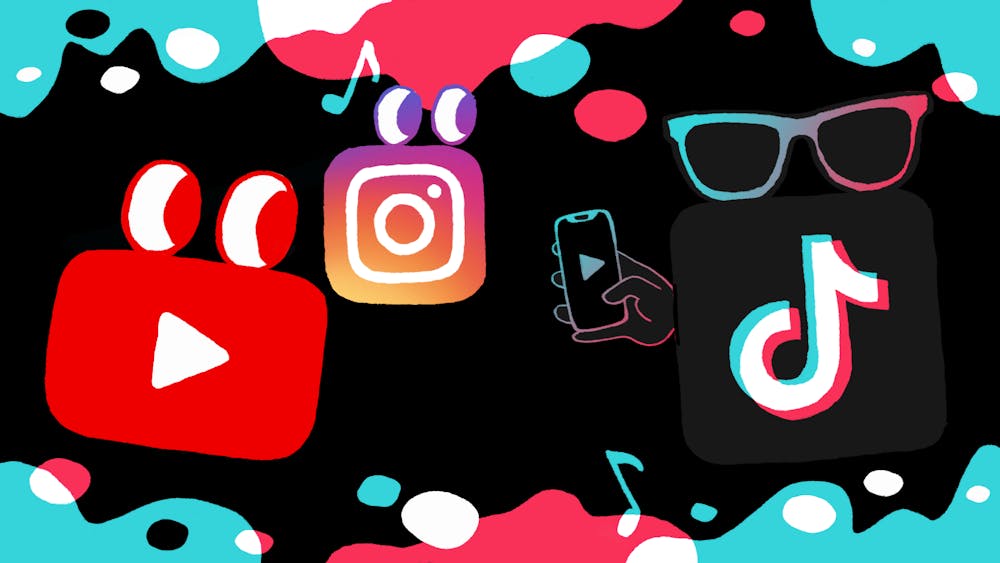If you’ve ever tried weaning off of social media, you know it’s much easier said than done. From connecting us with friends and the latest trends, to becoming an on–demand news source, social media has begun to consume more of our lives than we know. Because of this, a social media habit—that is, the routine, semi–automatic use of different platforms—can quickly form within users. For all their strength, though, they tend to go unnoticed. It's only when attempts are made to distance ourselves from these platforms that we realize the hook their algorithms have already had on us.
A social media algorithm gauges individuals’ likes and dislikes and uses them to generate content that they’re likely to interact with. Instagram has its Explore page, TikTok has the For You page, and even Facebook has its reliable Suggested column. This is the format that pays. For as long as there's something for you to consume via these platforms, you stay on them. Once there isn’t, you can always move on to the next—and, as planned, we normally go.
For this reason, where one social media platform app is downloaded, another follows. It’s rare to find only Instagram or Twitter on someone’s phone when media developers have made transitions between such—i.e., an endless stream of information—so accessible. This design is more than intentional: We’re attracted to the familiar, and these apps reflect one another to profit off of that simple fact.
Consider, for example, the popularity of TikTok that has been reflected in the Instagram algorithm. TikTok, though available worldwide since 2018, skyrocketed to popularity in the beginning of 2020 with 318 million downloads. Instagram reels, which mirror the short–clip feed format of TikTok, followed shortly after in August of 2020. Similarly, Snapchat released a competitive software known as “Spotlight,” though it hasn’t seen nearly as much popularity as its predecessors.
Before this, shortly after the boom of Snapchat around 2015 and 2016, Instagram released their infamous stories feature. Unsurprisingly, it exactly imitated Snapchat’s 24–hour, filtered layout. TikTok, in 2022, added the same feature.
I’m sure I’m not the only one who has often bounced aimlessly between social media apps for what seemed like forever. This is no coincidence. To make for a seamless transition from one app to another, social media platforms will become mirrors of each others’ successful techniques. So even if you try to quit one application, you’re likely to quickly find yourself on another with similar endless, rewards–based features. This creates a sticky all–or–nothing dilemma for facing social media addiction. As social media has rooted itself in social anything, quitting altogether is typically not chosen.
This is not to say that quitting social media is impossible, only that the difficulty one might find in doing so is not inherently their fault. We’re living in a new, saturated age of social media addiction, which takes root in our generation especially. These innovative tactics and algorithms ensure that our minds always have a reliable form of entertainment, no matter where we go. On average, more than half of the American teenage population spends over 25% of their day on social media. We bounce through apps that, despite promises of different content, often take us through the same cycles of consumption, and it is for this exact reason that we keep coming back.
So, what’s to be done?
A complete removal from social media is extreme for many, and it’s definitely not necessary. It’d be hard for anyone, especially at this age, and we’ve formed habits that we might not even know about. That being said, though, overconsumption of social media can lead to numbing information overload. It can be detrimental to social interactions. Drue Watkins’ words from “The Bottomless Pit of Social Media” stand strong in today’s social media operation: “All things in moderation.” This advice is resounding wisdom for the generation of today—those of us that grew up with social media and cling to it like a baby with its bottle.
Taking social media in doses forms bubbles of its positive effects around you, such as exposure to new cultures and gateways to communication with friends. It is when we disregard its negative implications and fall victim to the ease across applications that, before we know it, we are in a bubble ourselves. It is this bubble—not social media entirely—that must be avoided, and as we tune in more to the present moments around us, this becomes possible.

